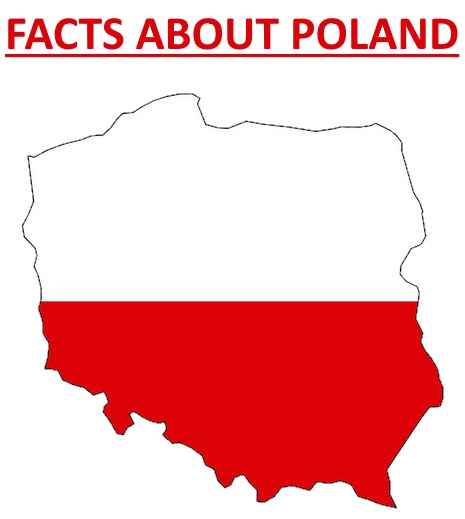Hello ladies and gents this is the Viking telling you that today we are talking about
INTERESTING FACTS ABOUT POLAND
Here’s what the tourism board doesn’t tell you about Poland and neither does Google since quite often Google tends to forget about Poland’s achievements. These facts can make your trip to Poland way more interesting. Here are weird and interesting facts about Poland and things about Poland that most people don't know about.
1. Poland is the 9th largest country in Europe
(8th not Including Russia) Poland isn’t a small country, it’s actually one of the largest ones. Poland is bigger than Italy and the UK.
2. The name "Poland" (Polska) has a meaning.
It originates from the name of the tribe Polanie, which means "people living in open fields".
3. Polish history is very complicated
If you’re a fan of Game of Thrones, you might start reading Polish Medieval History. You’ll get confused many times (try reading something on the period from 1138 to 1320).
Later times also haven’t been easy for Poland. The country has been invaded or has fought for freedom in insurrections over 40 times. Poland even disappeared from world maps between 1772 and 1795.
4. Poland's consitution was the 2nd in the world
Poland adopted its first written constitution in the spring of 1791, which was the 2nd in the world valid legal document of the kind. However, it was only in effect for only 14 months and 3 weeks before Poland was in partitions for over 100 years.
5. Polish engineer invented the Modern Kerosene lamp
In 1853, Ignacy Lukasiewicz introduced the first modern street lamp from in Europe. His lamp inventions were, however, first used in Lviv in Ukraine. There is still a street in Warsaw that uses the same street lamps until today.
6. During the WWII Warsaw was almost completely destroyed and had to be rebuilt completely
The Old Town that you can see in Warsaw isn’t the actual Old Town from before the war. The original has been completely bombed at in the 40s and Poles rebuilt it after the war using Bernardo Bellotto’s detailed paintings. That’s why now looks as it did in the 14th century, rather than the 20th.
7. Marie Curie was actually Polish
Marie Curie, the woman who discovered Polon and Rad, wasn’t French, but Polish. Her name was Marie Sklodowska before she married a Frenchman named Pierre Curie. She was the first woman to win a Nobel Prize, the first person and only woman to win twice, the only person to win a Nobel Prize in two different sciences.
Joseph Conrad was actually Polish too. His real name was Teodor Józef Konrad Nałęcz-Korzeniowski. You’re welcome.
8. Poland has beaches, mountains, ferests, deserts and lakes
Poland has a very diverse nature. Almost 800 km of the seashore and a few mountain chains (Tatra, Carpathian, Sudet Bieszczady and Świętokrzyskie). Poland also has the only Central-European desert, Pustynia Błędowska.
There are also dunes in the Pomerania region that are a curiosity on a European scale. So are wetlands in Biebrzański National Park. And islands in Woliński National Park.
9. Traditional Polish last names change depending on the sex
Names that end with –ski/ska or –cka/cki work like adjectives and need to match the gender in Polish. So, if your father’s name is Kowalski, if you’re a female you’ll be called Kowalska. All Polish surnames in the US are a male version.
10. Europe's heaviest animals live in Poland
The 380,000-acre (150,000-hectare) Białowieża Primeval Forest in Poland is Europe’s last ancient forest and home to 800 European bison, Europe’s heaviest land animals.

Comments
Post a Comment